All products featured are independently chosen by us. However, SoundGuys may receive a commission on orders placed through its retail links. See our ethics statement.
JBL Grip vs JBL Clip 5: The best ultra-portable JBL speaker is...
October 2, 2025
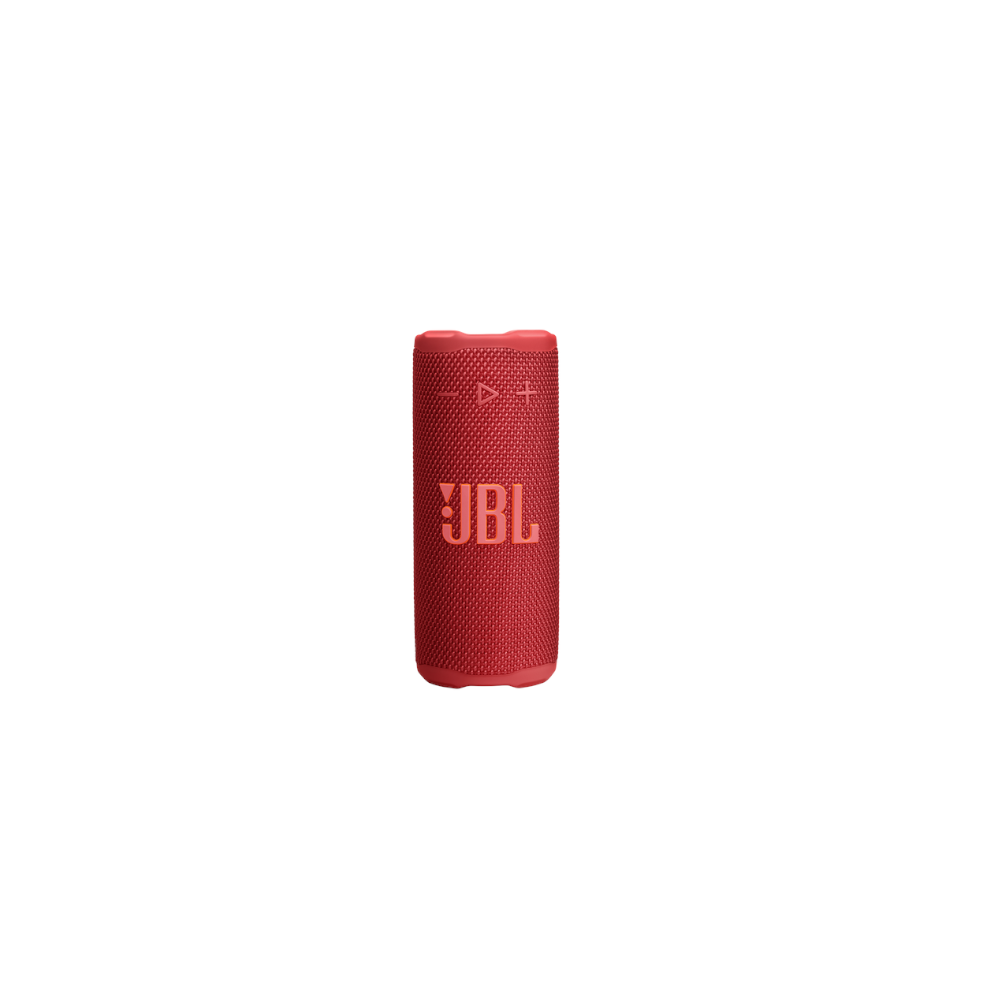


The JBL Grip and JBL Clip 5 target the same ultra-portable Bluetooth speaker market, but their designs take very different approaches. The Grip features a vertical, can-shaped build with ambient lighting, while the Clip 5 sticks to its signature clip-on design with a built-in carabiner. So which one is right for your backpack? Let’s dive into this JBL Grip vs. JBL Clip 5 comparison.
This article was published on October 2nd, 2025, and is the first version.
What’s it like to use the JBL Grip compared to the JBL Clip 5?
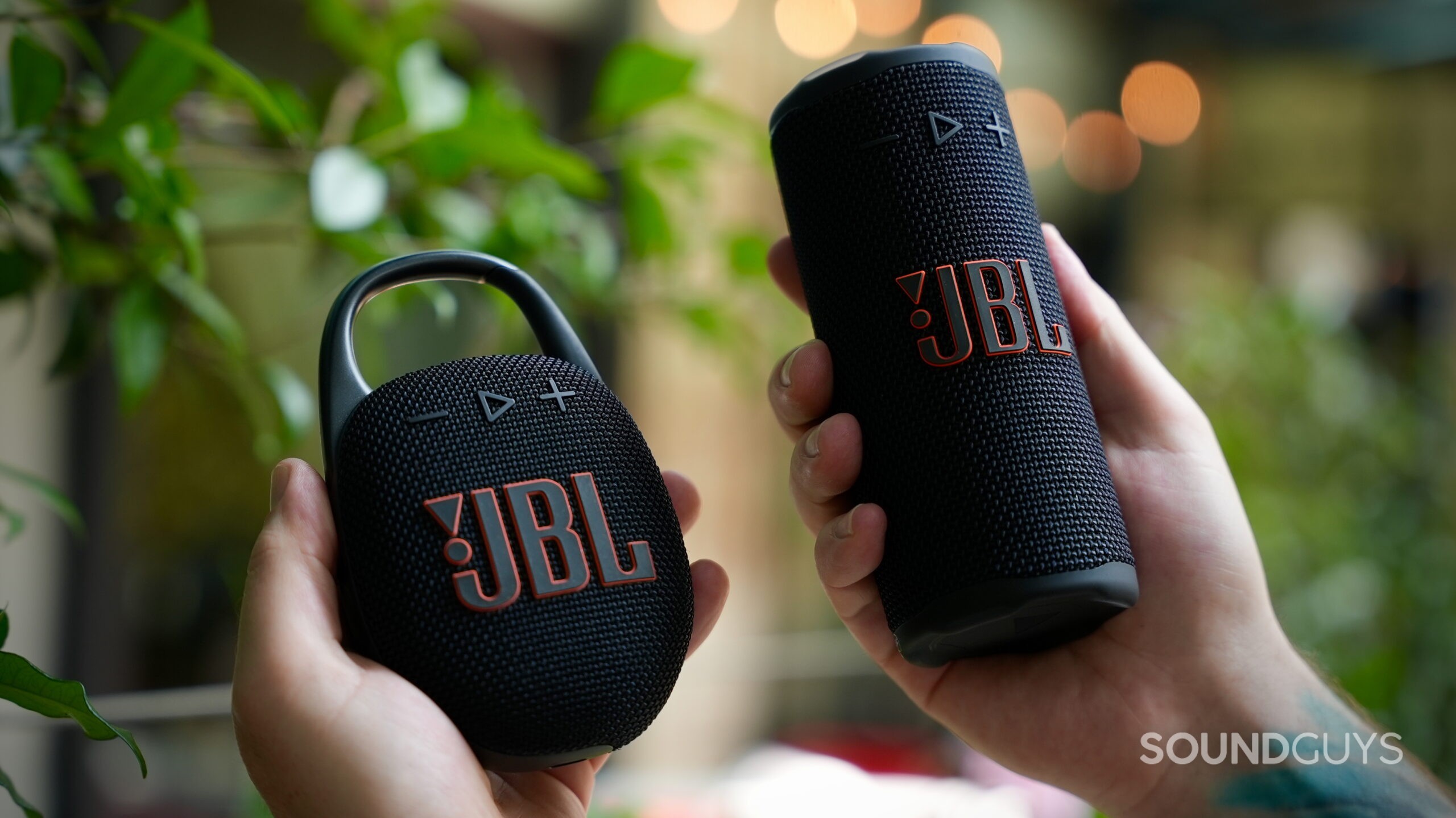
The Grip uses an upright design, roughly the size of an energy drink can, making it easy to stand on a desk or slide into a backpack sleeve. At 385g, it feels solid yet portable, wrapped in the usual JBL fabric, complete with a “drop-resistant” build and an IP68 rating against dust and water. A rear LED light strip adds personality, with controls on top for playback, Bluetooth, and Auracast, plus a small attachment loop on the back for carrying options.
The Clip 5 also focuses on grab-and-go use—or rather, clip-and-go. At just 285g, it’s a lighter and more compact option, and the integrated carabiner is designed to hang from a backpack, bike, or tree branch. JBL also added thicker silicone padding on the back so it can rest flat if you want to use it as an upward-firing speaker. It carries an IP67 rating, which is still plenty durable. Controls include playback buttons on the front, with power, Bluetooth, and Auracast tucked into a recessed side strip.
Does the JBL Grip or JBL Clip 5 have more features?
While both the JBL Grip and Clip 5 work with the JBL Portable app, the Grip offers more advanced customization, including a 7-band custom EQ, lighting controls for its rear LED strip, and Auracast pairing with other compatible JBL speakers. Both speakers also support multipoint connectivity and stereo pairing with an identical model.
The Clip 5 improves on its predecessor (the Clip 4 had no app support) with a 5-band custom EQ, preset sound modes, and the same Auracast and multipoint capabilities as the Grip. However, when using Auracast on both models, custom EQ settings revert to JBL’s Signature Sound preset, which limits flexibility.
How do the JBL Grip and JBL Clip 5 connect?
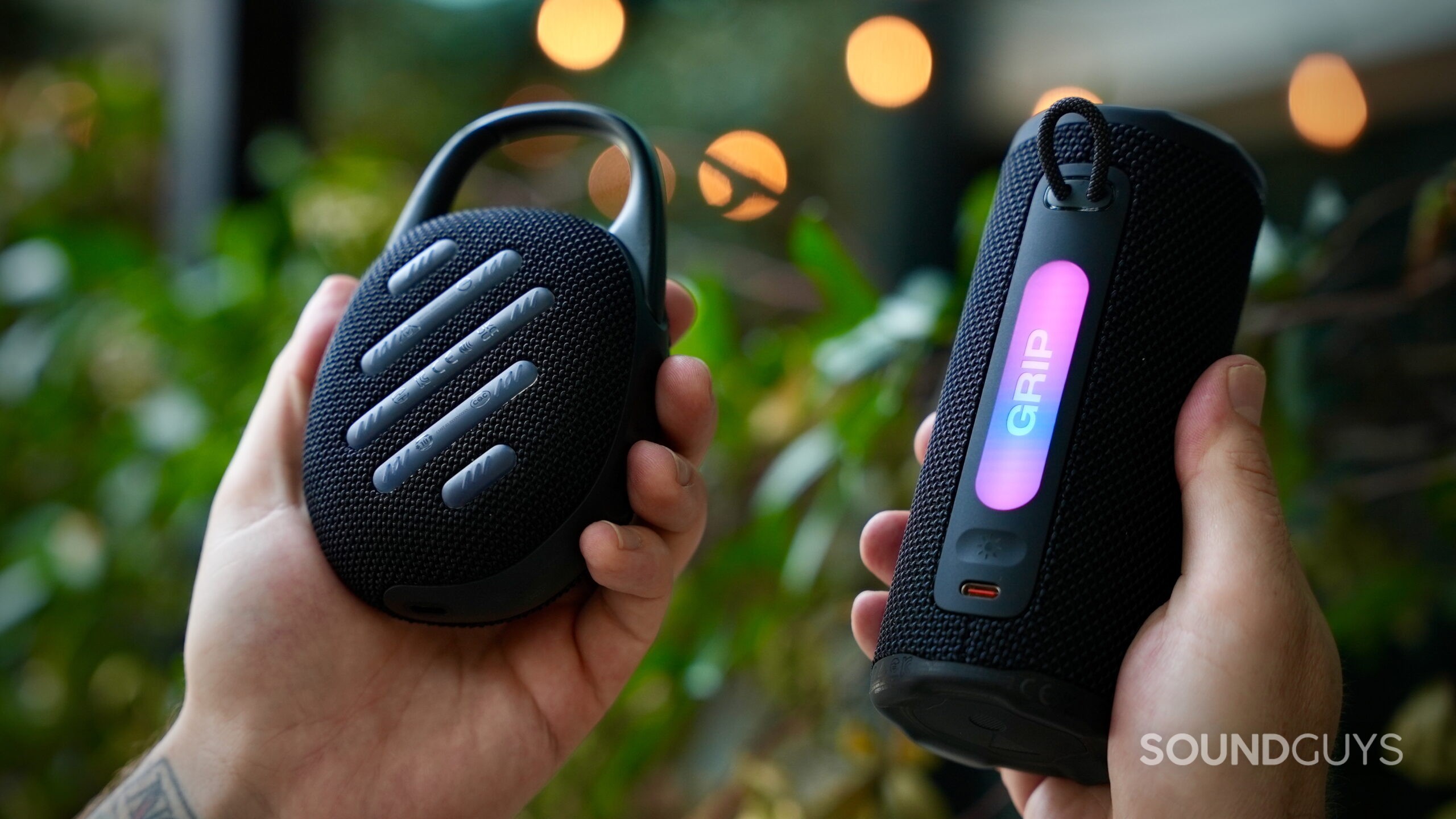
The Grip uses Bluetooth 5.4 and supports both SBC and AAC codecs. As mentioned, it’s Auracast-ready and can connect with other recent JBL models like the Flip 7, Charge 6, and even the Clip 5. It cannot connect with older PartyBoost models like the Flip 6 and Charge 5. The Clip 5, on the other hand, uses Bluetooth 5.3 and supports only the SBC codec, with the same backward compatibility limitations.
Is battery life better on the JBL Grip or JBL Clip 5?
JBL claims the Grip can last up to 12 hours on a single charge, with the option to extend that to 14 hours using PlayTime Boost. It sounds fancy on paper, but PlayTime Boost is essentially an EQ setting that cuts low-end response, reducing the speaker’s power draw. You might get more playtime, but it doesn’t sound very good—it’s kind of like a podcast EQ preset: all mids.
The Clip 5, on the other hand, also advertises 12 hours of playback per charge, with up to 15 hours using PlayTime Boost. Of course, actual battery life will depend on how loud you crank the speaker and how bass-heavy your music is.
Does the JBL Grip sound better than the JBL Clip 5?
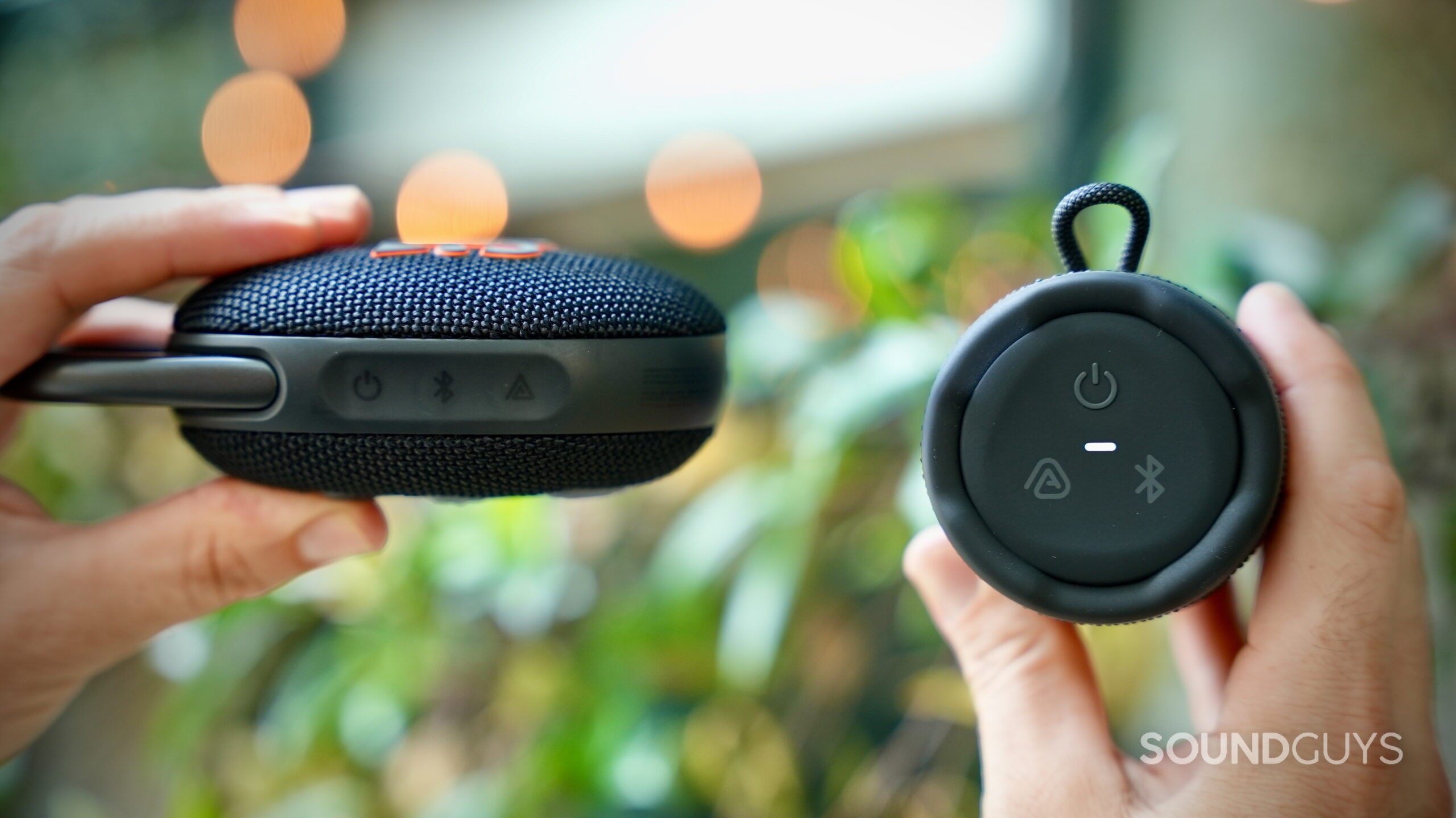
There’s a noticeable difference in sound quality between the two units. The Grip delivers a fuller, more balanced sound, thanks to its 16W setup with a single 43 x 80mm full-range driver and dual passive radiators. Kick drums hit harder, and vocals come through with more detail compared to the Clip 5. On tracks like Tame Impala’s The Less I Know the Better, the Grip reproduces bass lines with more precision, while the Clip 5 sounds boxier. Put simply, the Grip punches above its weight, while the Clip 5 sounds like a small speaker by comparison.
The Clip 5 outputs 7W through a 1.75-inch driver with a single passive radiator. Its stock tuning emphasizes the midrange, so instruments like snare drums and distorted guitars cut through the mix. However, at higher volumes, treble can sound sharp, and the overall mix gets congested. The 5-band EQ helps rebalance things—adding some bass depth and treble clarity if you choose—but the sound remains constrained by its smaller size and lower power output.
If you like to crank your portable speaker or want a consistent low-end thump, the Grip is the better choice.
Should you get the JBL Grip or the JBL Clip 5?
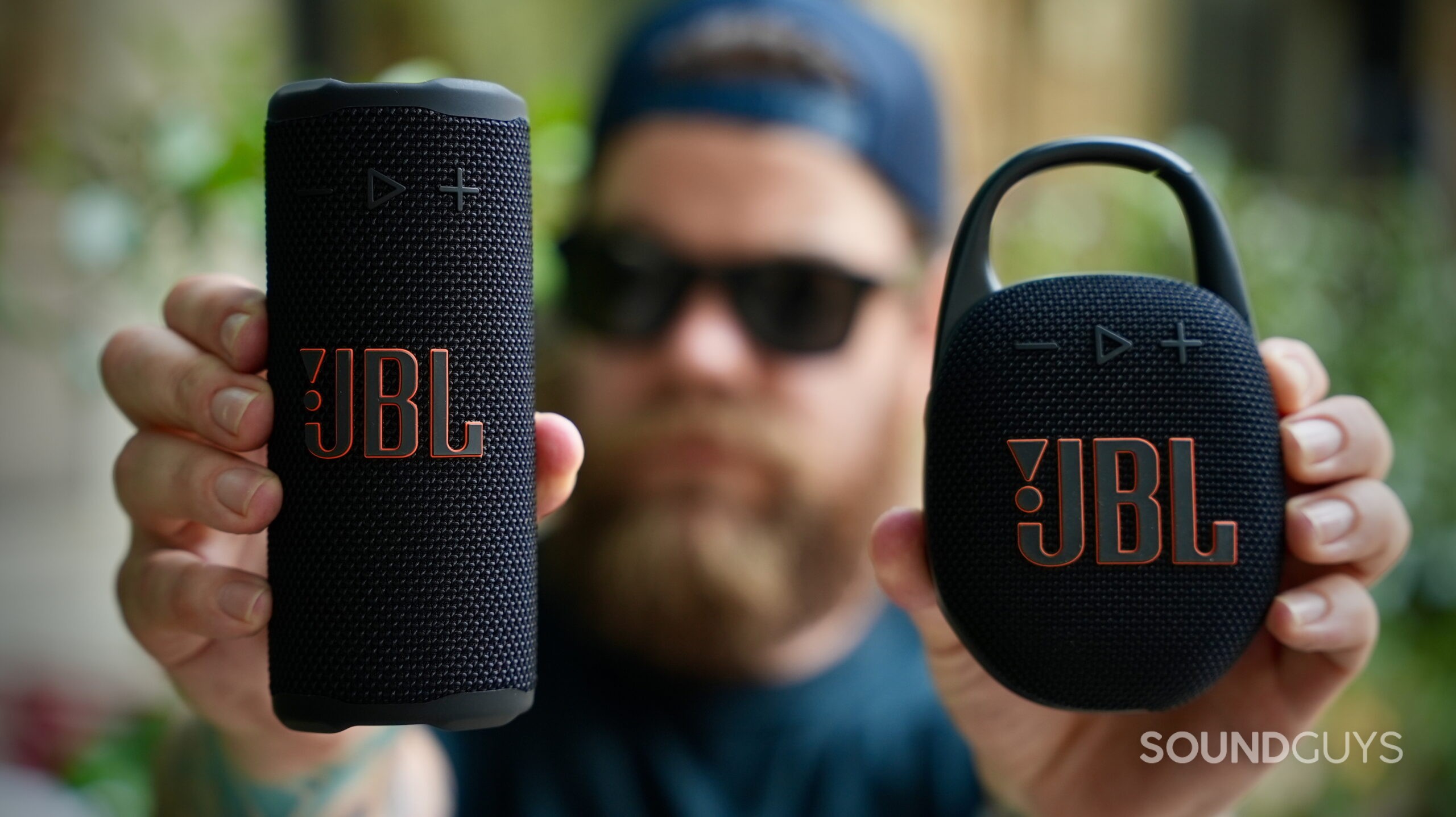
If it’s in your budget, the JBL Grip is the better pick for sound quality in a truly portable form. It delivers fuller, more detailed audio than the Clip 5, and the ambient lighting adds a fun touch for beach days or patio hangs—without adding bulk. You also get IP68 durability, AAC support, and a customizable 7-band EQ, all of which make the Grip feel more premium.
The JBL Clip 5, on the other hand, leans fully into its clip-on convenience. While it doesn’t sound as rich or powerful as the Grip, it’s lighter, more affordable at $79.95, and built for casual listening on the go. If it’s just you and a friend out and about, the built-in carabiner makes it easy to bring the Clip 5 anywhere, no bag required.
For better sound and more features, go with the Grip. For simplicity, lower cost, and hands-free portability, the Clip 5 gets the job done.
What should you get instead of the JBL Grip and JBL Clip 5?
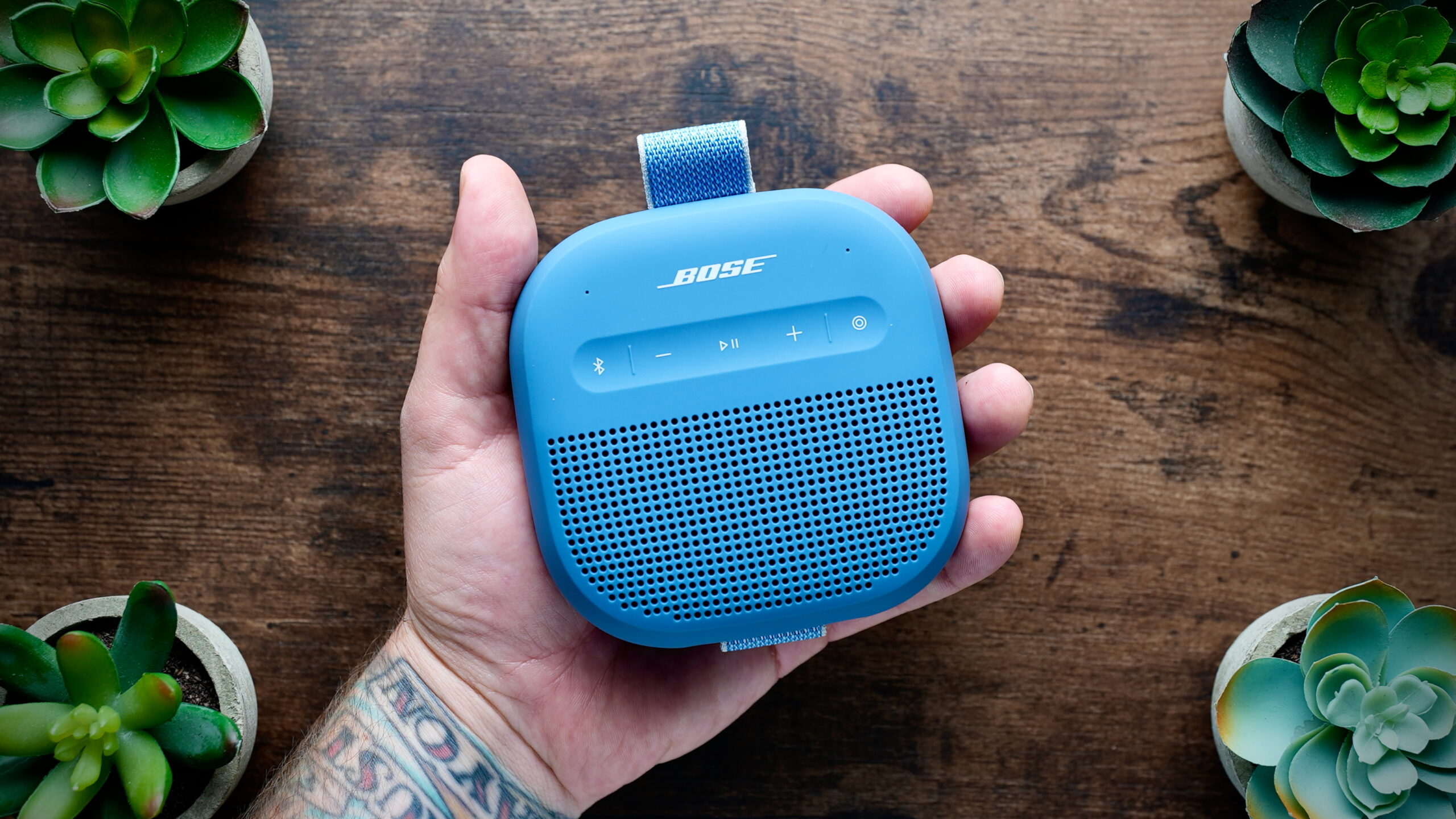
If you’re into the grab-and-go design that you can attach to a backpack or strap to a bike, it’s worth checking out the Bose SoundLink Micro (2nd Gen). It offers premium build quality, a versatile fabric strap for mounting, and surprisingly decent sound for its size. Snag one for $129 at Amazon.
Thank you for being part of our community. Read our Comment Policy before posting.